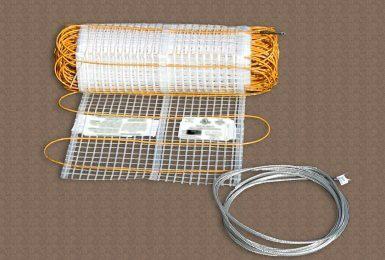

Here's a concrete slab we're getting ready to pour with the radiant heat installed professionally. Once the concrete is poured there's no going back and trying to change something if it's not working properly.
#RADIANT FLOOR HEATER INSTALL#
These are all things I feel are best left to someone who is trained to install radiant heat in concrete floors.
#RADIANT FLOOR HEATER HOW TO#
Knowing how to lay-out each zone so the tubes don't cross over each other is important.The tubes need to be fastened securely so the concrete floor guy doesn't disturb them.What I notice is the pex tubes need to be a certain distance apart depending on the design.
#RADIANT FLOOR HEATER PROFESSIONAL#
Personally, I would hire a professional to do the installation of the pex tubing instead of trying to do it myself. I've been on a lot of job-sites and poured a lot of concrete floors where radiant heat is being installed. I'd say we pour at least 1 concrete floor with radiant heat, weekly. Radiant floor heating usually lasts around 20-35 yearsĪs you can see, we pour many concrete floors with radiant heat installed, especially since we live in Maine and deal with very cold winters. How long does radiant floor heating last? Floor coverings - some flooring materials like carpet can slow the rate it takes to heat a room.Quick heat - it takes longer to initially heat up a room because you have to heat all that concrete first.Up-front costs - installation costs usually run higher compared to traditional heating systems.What are Some disadvantages of concrete floor radiant heat? Silent - the system is completely concealed in the concrete with no air vents, baseboards or wall radiators.Healthy - no air is being blown into a room which could circulate pollutants.Comfortable - draft free and evenly distributed heat throughout your home.



 0 kommentar(er)
0 kommentar(er)
